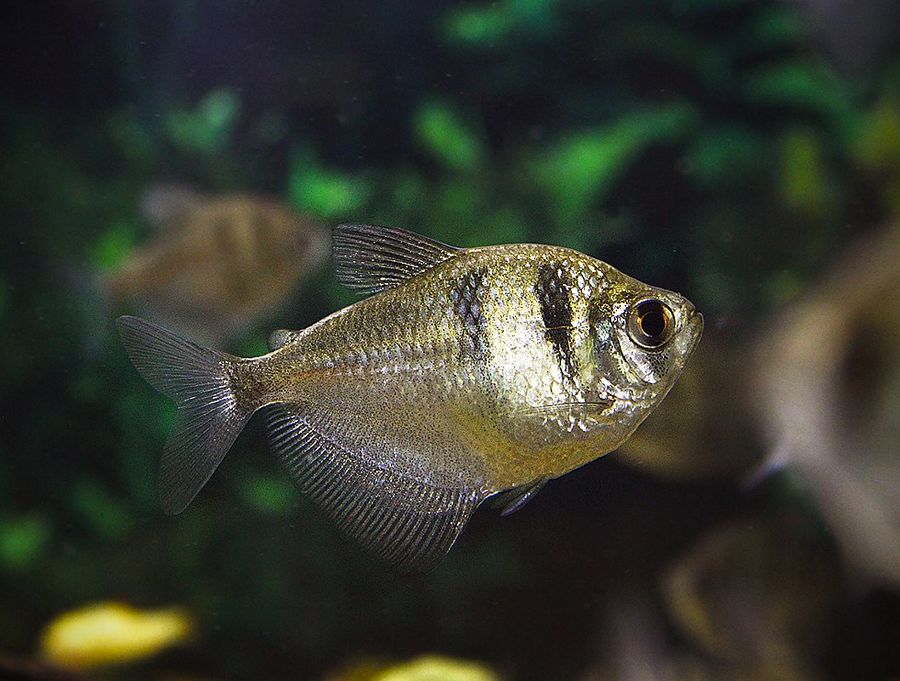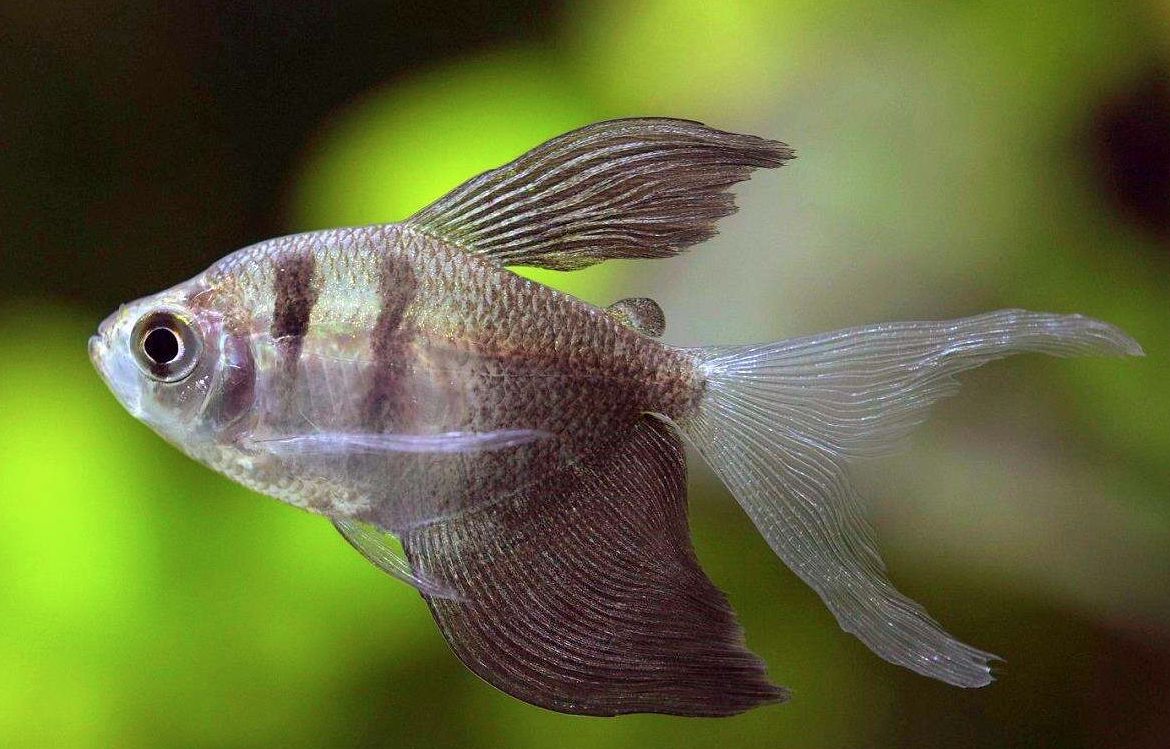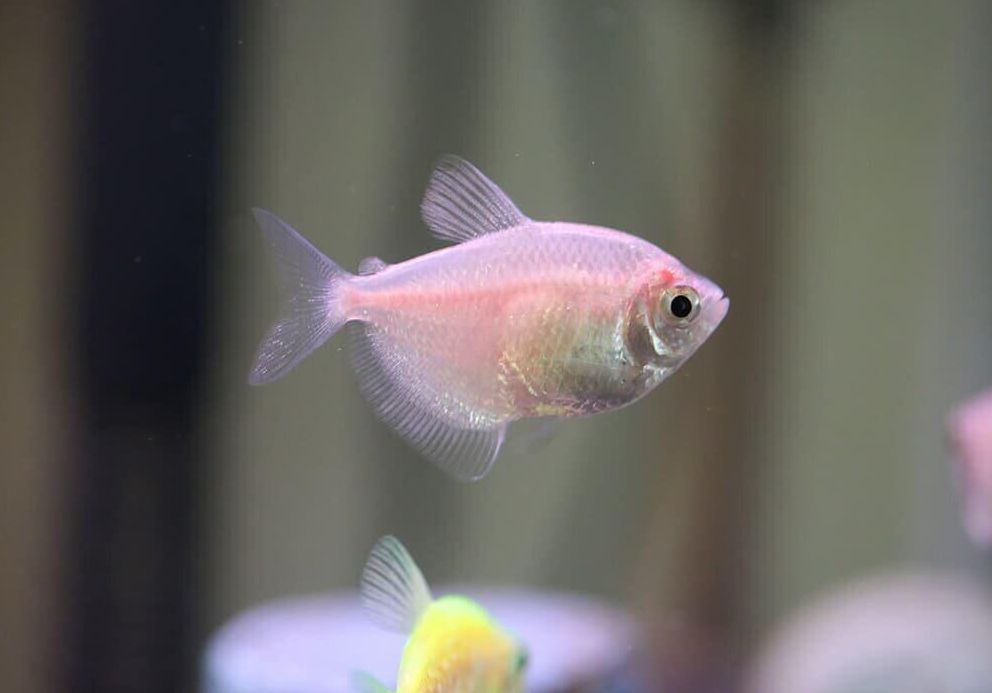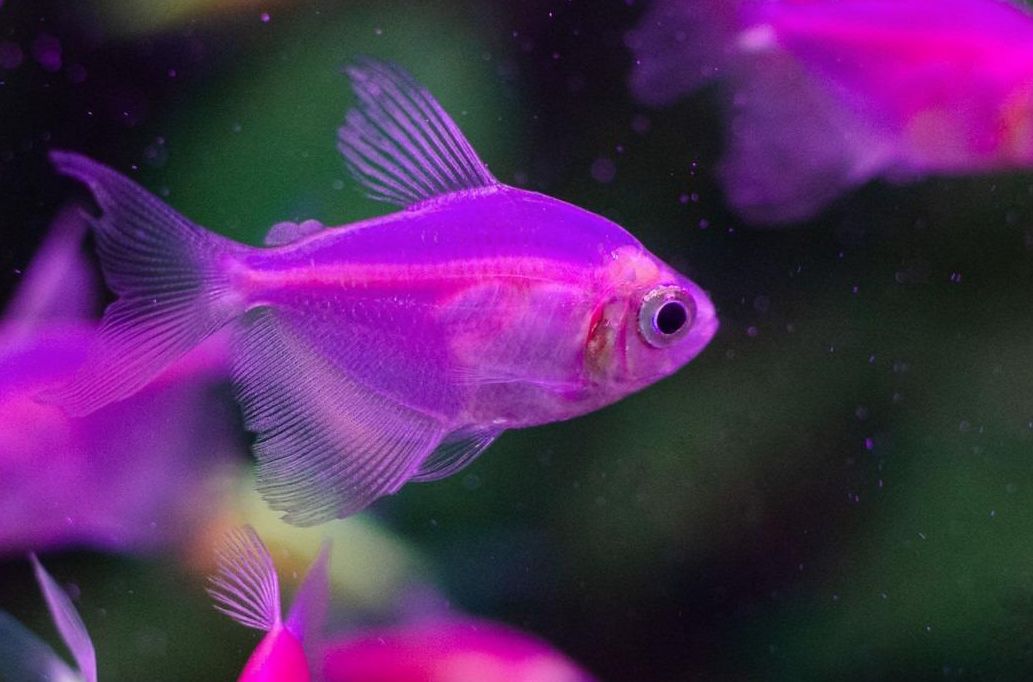Black tetra or black skirt tetra (Gymnocorymbus ternetzi) — is a kind of freshwater fishes of the Characidae family, popular fish species that is known for its striking appearance and active nature. This kind of fish has easily adapted to aquarium conditions, it breeds easily and has a numerous offspring. However, this fish may start nipping other fishes fins, so it’s not a good idea to keep it in a tank with veiled kinds of fishes or with long-finned ones.

Contents
Habitat in the wild
The black tetra was first described in 1895 by Boulenger, and then it was brought to Europe in 1933. A model fish species when scientists created glofish tetra.
Black skirt tetras are native to the freshwater rivers and streams of Brazil, Paraguay, and Argentina. In the wild habitats are in Mato Grosso, Paraguay and Rio-Negro rivers. In their natural habitat, black skirt tetras inhabit slow-moving or stagnant waters, including marshes and flooded areas. Tetra prefers slow waters of small rivers, streams, tributaries well shaded by the tree branches. These waters are typically clear or slightly turbid. The riverbeds where they are found are usually composed of sand, gravel, and leaf litter. These substrates offer a natural environment for the fish to explore and search for food.
However, they have adapted to tank conditions quite well and now the fish is widely spread in aquariums. Nowadays the fish is almost not exported, since the majority of them is bred at farms.
Description
Body and color
Black tetra has high and flattened body, typical tetra body structure, which is tall and laterally compressed.
The name “Black Skirt Tetra” comes from their coloration. The upper half of their body is shiny black, extending from the dorsal fin to the caudal peduncle. The lower half of their body is typically white or silver, creating a stark contrast.
It has dark-silvery coloring with three vertical black stripes. One of them crosses the eye, the second one starts at the opercles endings. The remaining part of the body starting from the third stripe, including upper and proctal fins, is black and it looks like a skirt. The pectoral, dorsal and pelvic fins are quite transparent, and its proctal fin reminds a black skirt, as we’ve mentioned earlier. Is rather energetic and active fish, it swims in schools and they often attack each other.
Size
How big do black skirt tetras get?
The maximum size of black skirt tetras is typically around 2.5 to 3 inches (6 to 8 centimeters) in length. Males tend to be slightly smaller and more slender compared to females. It’s important to note that individual fish can vary in size, and there may be slight differences between males and females.
Lifespan
How long do black skirt tetras live?
Black skirt tetras typically have a lifespan of around 4 to 6 years. However, with proper care and a suitable environment, some individuals have been known to live slightly longer.
| Characteristic | Description |
|---|---|
| Scientific Name | Gymnocorymbus ternetzi |
| Common Names | Black Skirt Tetra, Black Widow Tetra |
| Size | Approximately 2.5 to 3 inches (6 to 8 centimeters) |
| Lifespan | 4 to 6 years |
| Temperament | Generally peaceful, but may nip fins if stressed |
| Schooling Behavior | Prefers to be kept in groups of at least six individuals |
| Body Coloration | Upper half is shiny black, lower half is white or silver |
| Fin Coloration | Fins are generally translucent or slightly reddish-orange |
| Natural Habitat | Freshwater rivers and streams in South America |
| Preferred Water Parameters | Temperature: 72 to 79°F (22 to 26°C), pH: 6.5 to 7.5 |
| Diet | Omnivorous – Accepts high-quality flakes or pellets, Supplement with live or frozen foods like brine shrimp or worms |
| Compatibility | Peaceful and can coexist with other community fish, Avoid aggressive or fin-nipping species |
| Breeding | Egg scatterers – Separate breeding tank with plants required |
Types of black tetras
Long Fin Black Skirt Tetra
The black tetra has another morphs: the long-fin black skirt tetra that was first bred in Europe. This variety is selectively bred to exhibit longer and more flowing fins compared to the standard black skirt tetra. It can be very often seen on sale and it has nothing different in care comparing with the classical tetra, but it’s a bit more difficult to be bred due to inbreeding. It’s important to note that the longer fins of the Long Fin Black Skirt Tetra can make them more susceptible to fin nipping and damage. Therefore, it is recommended to keep them in a tank with compatible, non-aggressive tank mates that won’t nip at their fins.

Albino black skirt tetra
As for the albino black tetra variation a – they are encountered more seldom, but they differ from the black skirt tetra only in color. Albino fish lack the pigmentation responsible for their typical coloration, resulting in a pale or white appearance. In terms of care requirements, albino black widow fish have the same needs as their non-albino counterparts.

Glofish tetra
Glofish tetra – these are genetically modified (GMO) fishes. This is a modern and very popular trend in aquarium husbandry nowadays. However, you should buy such fishes sensibly, keeping in mind that GMO have never made anyone healthier and these fishes lifespan maybe shorter due to this.
Difficulties in keeping
Care is undemanding and this is a fish for beginner. It adapts well and it eats any kind of feed. The fish is good for community tanks at the condition that it won’t have long-finned tank mates.
Care and keeping in a tank
The fish likes soft and acidic water with fluctuants and not bright light. Don’t forget to close your tank, because the fish can jump pretty well and it can die outside.
Tank size
Since black skirt tetra is a very active one, it has to be kept in spacious tanks from 20 gallons (75 liters) to accommodate a school of these fish comfortably. However, a larger tank would be even better, as it allows for more swimming space and provides a more stable environment. Larger tanks helps mimic their natural habitat and reduces the likelihood of aggression among individuals. Additionally, having a larger tank makes it easier to maintain stable water parameters and provides more options for aquascaping and creating an aesthetically pleasing environment.
Water parameters
The ideal temperature range for black skirt tetras is between 72 to 79°F (22 to 26°C). They prefer slightly acidic to neutral water conditions. Aim for a pH level between 6.5 to 7.5. Maintaining stable pH levels within this range is important for their well-being. Black skirt tetras can adapt to a range of water hardness levels. However, they tend to prefer slightly soft to moderately hard water. Aim for a water hardness level of 5 to 15 dGH (degrees of General Hardness). Weekly water renew up to 25% from the total water amount and a filter are common requirements.
Decor
This kind of fish perfectly appears in a tank with natural biotope – sandy bottom, number of snags and fallen leaves on it, which make the tank water brownish and acidic. Tank maintenance is a standard one and the same as for all other fishes.
Diet
Black tetra is completely not demanding as for the feed, so any kind of live, frozen or artificial feed will do. A staple part of their diet can be high-quality flakes or pellets specifically formulated for tropical fish. The fish prefers flakes and other types of feed that stay on the water surface.
Tetras also benefit from occasional feedings of live or frozen foods to provide variety and increase their nutrient intake. Some suitable options include brine shrimp, bloodworms, daphnia, and mosquito larvae. These can be fed as treats once or twice a week.
When feeding your black skirt tetras, it’s essential to offer small portions that they can consume within a few minutes. Overfeeding can lead to water quality issues. Monitor their feeding behavior and adjust the amount accordingly.
Tank mates
Fish must be kept in schools, since when it’s all alone it becomes aggressive. Remember that Black Widow Tetras are schooling fish, and it’s important to keep them in groups of at least six individuals. The larger the group, the more natural and comfortable they will feel.
It’s better not to keep it together with smaller fishes or long-finned ones. Because they will bite the latter, for example, don’t keep it with bettas or angelfish.
Due to its temperament tetra can be kept in a tank together with other small tetras, such as Neon Tetras (Paracheirodon innesi), Cardinal Tetras (Paracheirodon axelrodi), or Ember Tetras (Hyphessobrycon amandae). Keeping them in a mixed tetra community can create a visually appealing and lively aquarium. The black tetra is ideal for mixed aquarium.
| Tank Mate | Compatibility |
|---|---|
| Rummy Nose Tetras | Peaceful, compatible schooling tetra species |
| Glowlight Tetras | Peaceful, compatible schooling tetra species |
| Diamond Tetras | Peaceful, compatible schooling tetra species |
| Bleeding Heart Tetras | Peaceful, compatible schooling tetra species |
| Lemon Tetras | Peaceful, compatible schooling tetra species |
| Serpae Tetras | Can be slightly nippy, monitor compatibility |
| Black Neon Tetras | Peaceful, compatible schooling tetra species |
| Emperor Tetras | Peaceful, compatible schooling tetra species |
| Red-eye Tetras | Peaceful, compatible schooling tetra species |
Corydoras catfish species, like the Adolfoi Corydoras or Panda Corydoras (Corydoras panda), can be compatible tank mates. They are bottom-dwelling fish that help keep the substrate clean and add activity to the lower levels of the tank.
Gender differences: male vs female
Distinguishing between male and female black skirt tetras (Gymnocorymbus ternetzi) can be challenging, especially when they are young or not in breeding condition. However, there are a few subtle differences that can help differentiate between the sexes:
- Size: Females are generally larger and rounder-bodied compared to males. Mature females may have a fuller appearance due to their larger ovaries.
- Fins: In some cases, mature male Black Skirt Tetras may have slightly longer and more pointed dorsal fins compared to females. However, this distinction is not always reliable, as fin length can vary among individuals.
- Behavior: During breeding periods, males may exhibit more aggressive behavior and display courtship rituals to attract females. They may chase females and display more intense colors.
To accurately determine the sex of black skirt tetras, it is often best to observe their behavior during breeding periods or consult an experienced aquarist or breeder who has experience with this particular species.
Breeding
Is an egg-laying fish and suitable spawning temperature for it is — 25-27 °C, water hardness 4°, pH 6.5-7.0.
Breeding occurs between the black tetra couples (sometimes it happens in a school). First, male is put into a spawning tank and then it a few hours – the female. Next day in the morning you should light the tank very brightly – this will push the spawning.
The light may be both natural and artificial. The spawning tank should have its bottom square equal to about 1500 cm² (50×30 сm) with some Java moss or a caproic net put on its bottom.
The net should have its cells wide enough for the falling fish eggs to get through and at the same time – not too large – to prevent fish from eating them. A couple can lay up to 500 and sometimes 1000 eggs during one spawning. After it is finished the fishes are removed from the spawning tank. The eggs incubation time is 24-36 hours, then larva appear and in 3-5 days they turn into juveniles, start to swim and feed.
The start feed for them is – infusorians and rotifers. Less of the juveniles survive if you feed them with some artificial feed. Also, while juveniles grow, they should be sorted and put into different tanks according to their size to prevent cannibalism among them.
